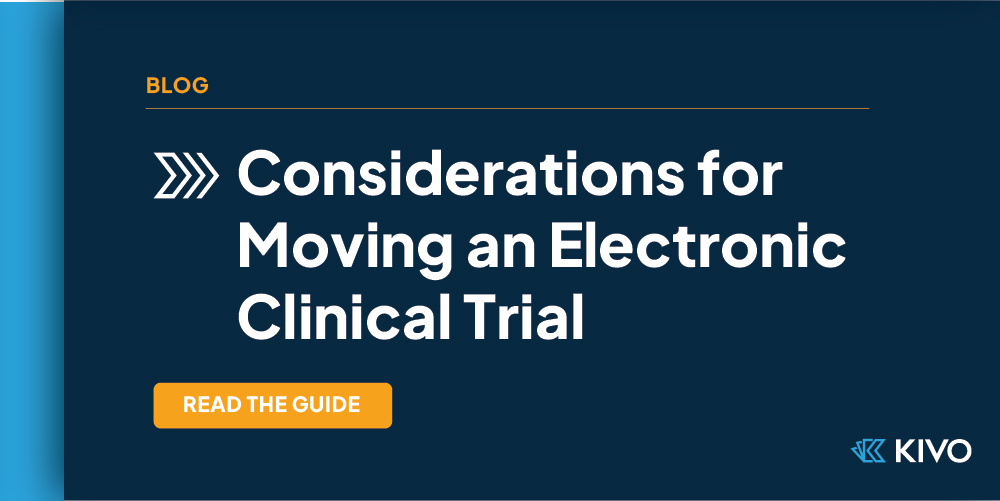Moving an electronic Trial Master File (eTMF) can be a complex process that requires careful planning, coordination, and execution. A TMF is a collection of essential documents that provides evidence of trial conduct, and compliance with regulatory requirements. The Trial Master File is not just a single system but involves the use of multiple electronic systems and data collection methods. Each system used for the trial has specific structures and functions, and bringing all of them together can be challenging. In this article, we will explore some challenges you might face during a TMF migration, the overall process of TMF transfer, and some key steps and considerations for a successful transfer.
Potential Challenges when Migrating a TMF
The complexity of moving a TMF can depend on several factors, including the system it is currently in and the new system to which it is being moved. Possible challenges may arise if the trial documents contained within an eTMF system at your CRO are structured differently than your/ the Sponsor’s system. Therefore, it may be difficult to manage the movement of the TMF from one system to another. Understanding the various components and how to move them at the end of a trial requires careful planning.
In addition, the various systems that may have been used during the trial can influence the way the data needs to be moved. The size and scope of the trial, the number of countries, and the number of sites involved can also influence the process. Consideration needs to be given to the regulations of moving data to ensure the proper chain of custody. The regulatory requirements must be met when transferring clinical trial data in order to maintain the integrity of the information. You can avoid this all together by having your own eTMF System.
Below, we outline key steps typically involved in moving a Clinical trial data.
Step 1: Planning the Transfer
The first and most critical step in transferring a TMF is proper planning. It is essential to have a well-documented plan that outlines the multiple steps involved in the process to ensure the proper movement of the clinical trial data. The plan should include the number of systems that contain trial data and how that data will be moved. Maintaining the chain of custody is crucial, and the system into which it will be moved must meet all the regulatory requirements for the type of data. By carefully planning the transfer, potential issues can be identified and addressed in advance, ensuring a smoother transition.
For further information regarding the steps, you should take prior to your transfer, download the TMF Transfer Checklist.
Step 2: Data Migration
Once the transfer plan is in place, the next step is data migration. Data must be migrated from the current system to the new system or platform. This includes ensuring that the data is properly formatted and that any necessary transformations are performed. It is important to document any changes or modifications for traceability purposes. Data migration should be performed with utmost care to avoid any loss or corruption of critical trial information.
Step 3: Validation
After the data is successfully migrated, the system for the TMF data should be validated to ensure compliance with regulatory requirements for clinical trials systems. A system should be validated to ensure that it is fit for purpose and functioning properly for the data it contains. Safeguards should be in place to ensure data changes are logged and knowledge of who accessed the information can be traceable. Audit trails and robust security measures should be in place to track and monitor any changes, modifications, or access to the data. It is crucial and required for all users to be trained on the system to ensure proper management of the trial data per FDA and EMA guidelines on computerized systems.
Step 4: Data Quality Control
Data quality control is an important aspect of the TMF transfer process. Once the trial data is moved to the new system, it must be checked for accuracy, completeness, and consistency to ensure that the transferred data remains complete, accurate, and reliable. Any transformation of the metadata or filing structure should be documented, and that documentation should be readily available to regulators should they request to see evidence of transfer activities. By maintaining data quality control measures, organizations can have confidence in the integrity of their trial data during and after the transfer.
Don't Forget: Communication
Effective communication is key throughout the planning and execution of the TMF transfer. All stakeholders, including sponsors, contract research organizations (CROs), and study teams need to be aware of the timelines, activities, and compliance requirements. Regular communication channels should be established to provide updates, address concerns, and ensure that everyone is aligned with the transfer process. Collaboration and transparency among all parties involved can help mitigate potential issues and ensure a successful transfer.
Conclusion
Moving a TMF is a complex process that requires careful planning, coordination, and execution. By following the key steps outlined in this article and considering the various factors that influence the transfer process, organizations can ensure a successful and compliant TMF transfer. From planning and data migration to validation, data quality control, and effective communication, each step plays a vital role in maintaining the integrity of the trial data.
Ensuring the activities are traceable will provide assurance that the data has maintained chain of custody. The Trial Master File is the evidence of the trial conduct and should be a comprehensive collection of documentation for trial activities. As such a valuable asset to the company, planning ahead for the TMF Transfer is a critical step in the Clinical Trial lifecycle.
For further information on how to prepare for and execute a TMF migration, contact the Kivo team.




